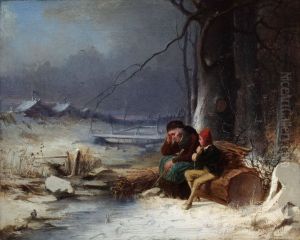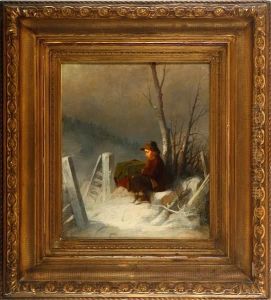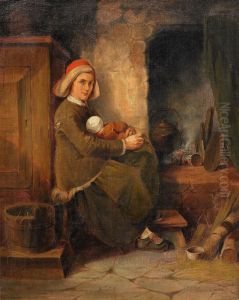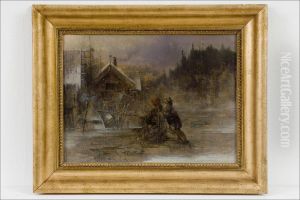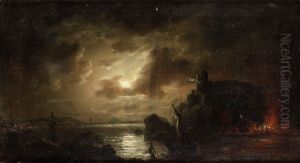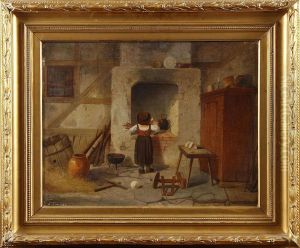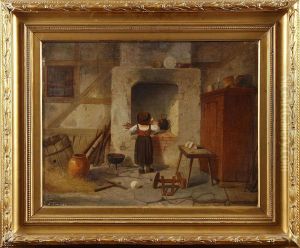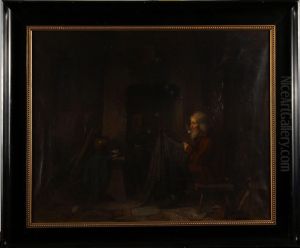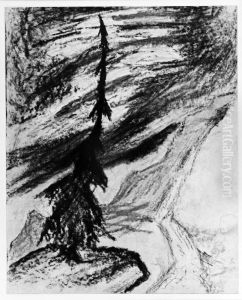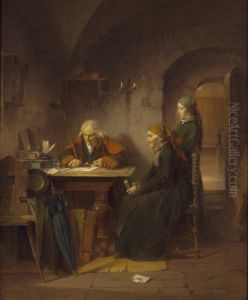Anders Gustaf Koskull Paintings
Anders Gustaf Koskull was a Swedish artist born in 1777, known primarily for his portrait paintings. Although not as internationally renowned as some of his contemporaries, Koskull played a role in the artistic scene of his time, contributing to the cultural life of Sweden in the late 18th and early 19th centuries.
Koskull's artistic journey began in his youth, showing an early talent for drawing and painting. He honed his skills under the tutelage of various artists and through his studies at the Royal Swedish Academy of Arts (Kungliga Akademien för de fria konsterna), an important institution for the development of Swedish artists. As a student, Koskull would have been exposed to the prevailing artistic trends of the time, including neoclassicism, which emphasized clarity, order, and balance, as well as the grandeur of simplicity—an aesthetic that often influenced his work.
Throughout his career, Koskull remained active in the Swedish art community. He created portraits of notable figures of his time, which were well-regarded for their elegance and attention to detail. These portraits not only served to cement the social status of their sitters but also contributed to the historical record, providing a visual document of the era's influential personalities.
Tragically, Koskull's life and career were cut short when he died in 1814 at the age of 37. The circumstances of his death are not widely documented, which is indicative of the modest level of fame he achieved during his lifetime. Despite his early death, Koskull’s existing works continue to be of interest to art historians studying Swedish portraiture and the broader artistic movements of the time.
His works, though not numerous, can be found in museum collections and are studied for their representation of Swedish neoclassicism. While Anders Gustaf Koskull may not have left behind an extensive body of work, his artistic contributions remain a part of the fabric of Swedish art history.
